Today you can learn to independently build walls of bricks and build a house. If you carefully examine the technology of brickwork walls, then at first glance it will seem that this is a very time-consuming process that is better to entrust professionals. But if you entrust this work to the masters of your case, you will have to give a considerable amount. If you familiarize yourself with the phased performance and adhere to step-by-step instructions, you can independently master the technology of brickwork of exterior walls.
What you need to know about brickwork
Compliance with laying standards allows you to get a monolithic and durable design.
Consider the main types of brickwork:
- Solid. Such a monolithic design is performed in the width of the half of the brick. The masonry is performed along the outer edges of the wall, and each row consists of half of the brick (the construction term is "Pollipich").
- Lightweight masonry. Popular when erecting multi-storey houses and office centers. It consists of such a laying of just two walls, the width of which is Polikirpich. The walls are erected in parallel to each other. The space between them is filled with thermal insulating material. This method is undesirable to build all the walls.
- Reinforced. When an additional strengthening of the elevated walls is needed or a significant load will be tested on the brick wall. The reinforcement (metal rod) is located in the seams - horizontally or vertical. Perhaps transverse reinforcement - with the help of a rectangular metal mesh or used zigzag. This grid is stacked every 3-5 rows of bricks.
- Decorative. Recently, increasingly gaining popularity and becomes the leader in the facing of the outer walls of the buildings. We give a common example: the wall of the outside of the building is made in three rows (spoon), which are brought by one pumping nearby. With such a laying, it is more expedient to work with a brick of different brands. There are more than 10 species of masonry options.
- Masonry and facing. It is simultaneously when the wall is erected. The ligation of the row and directly the masonry itself is performed solely at the level of the tile series.
In addition, there are several more dozen varieties of brickwork. Among them is to highlight the chain laying, which means the alternation of the rows. A row can be either spoonful or twin, and the seams must converge.
The cross masonry implies the laying of the seams horizontally, into the dressing with spoonful.
In addition, it is worth paying attention to the so-called "Dutch" brickwork, where the alternation of tychk and mixed rows is performed, and in a mixed row, bricks should be stacked through one.
When mixed brickwork is performed, then this species is called "Gothic".
Among such a variety of brickwork technology of walls, it is worth highlighting the most acceptable and economical option - the wells, when two walls are erected into the Pollipich, and the connection between them is performed by two options - vertical or horizontal bridge.
In order to save the building material, you can highlight the following brickwork options - well or lightweight. Thanks to this technology, the air layer between the two walls is filled with inexpensive thermal insulation materials (for example, minvata or construction felt). This method of laying the wall at the same time allows you to achieve good heat conservation indicators - about 35%. And if you fill the space of the foam, the heat shield properties can be raised to 50%.
Types of dressing schvs
Since the main condition for the brickwork of the bearing walls is to create structural strength, then you need to follow the rules for the distribution of the main load - the dressing schemes. This rule also applies to the brickwork of the inner walls.
Chain diagram:
This is the oldest way of masonry, where one by one vertical seams are bandaged in each row. To adhere to such a scheme, you need to alternate two types of brickwork (spoonful and twitch), and the lower seam is closed into two lengths.
Crosschair:
Such a method of dressing seams is that the seams are closed asmetry. On the spoonful scheme of the seams should be closed at half a long part of the brick.
To build walls in single-storey buildings, you can resort to a simplified version of the laying scheme - a multi-row scheme. According to the rules, every 3 or 6 rows are performed with a complete stack of seams (transverse or longitudinal). The popular masonry method in one-story houses is the alternation of five spoonful rows with one tychk.
Brick masonry wall photo:
How to choose brick
Modern construction highlights three types of bricks:
- Single.
- Overhead
- Double.
The first brick version was popular in the last century. Subsequently, the demand for the first type of building materials gradually decreased. Since the price of brickwork walls is considered high, then in order to save the outer walls, it is better to withdraw from a double or one and a half brick.
For example, if the wall laying is planned in 2.5 bricks, then a good option to use a double brick for masonry wall and facing in the Pollipich. If you use single brick for the construction of the same volumes, then costs will increase by 20-35%.
In addition, it is worth paying attention to the physical properties of the brick, namely, its thermal conductivity. If you use hollow brick, then you can reduce costs. But it should be borne in mind that it is not always possible to use such a material for the construction of the carrier wall.
If during the construction of the building is necessary to have a beautiful appearance, then buying a brick, you should pay attention to it. Building material must be smooth, without cracks and chips.
In addition, strength of the wall will depend not only on the type of masonry and brick type, but also on the cement slurry.
Masonry walls with his own hands
Before work on the erection of walls, to determine the amount of building materials. Should immediately decide how thick will brickwork walls. If you decide to perform the masonry brick in 1, then presumably the wall thickness will be 25 cm In addition, it is possible to erect a wall of various bricks:. White or red.
Building material consumption determined based on the thickness of the masonry. On average, per 1 m 2 it will spend about 55 bricks.
Tools for the job:
- laser or conventional construction gidrouroven;
- hammer;
- trowel
- roulette;
- square;
- cord and chalk;
- shovel;
- buckets and troughs.
Before work prepare core consumable - solution. It can be prepared based on cement, lime or mixtures of lime to the cement. If you prefer to work with cement mortar, it must be prepared in such proportions: cement - 1 part river sand - 3 parts or 1 part cement and 6 parts of sand.
Experts are not advised to use the mortar in the construction of residential buildings, because it reduces the strength of the masonry. Better prepare mortar from sand or cement with the addition of a small amount of lime.
How to make a masonry wall:
- First you need to prepare the foundation - the foundation of the building. After that operate partitioning wall contours using the cord angle of the left side to the right. Similarly, in the same direction is carried out and bricklaying the wall.
- The prepared solution was applied shovel and leveled special construction tool - trowel.
- Proceed to laying bricks. He fits into the right place to match the layout of its upper edge.
- Then, the "jumping" of bricks. It is set in its nest and it is necessary to knock a hammer until the edge will not be on the same level with the marking.
- Remove the excess grout. Trowel or trowel to remove excess solution and place it on top of the brick.
- To give a solution of good ductility at kneading cement and sand were added to a solution of slightly red limy test or clay.
- It is desirable to use the newcomers when laying brick walls to use chalk or pencil so that the brick lay down exactly and prevent mistakes in the masonry.
Brick masonry round walls:
Also, such a laying is widely used for the construction of wells.
See detailed video instructions How to properly carry out brickwork walls:

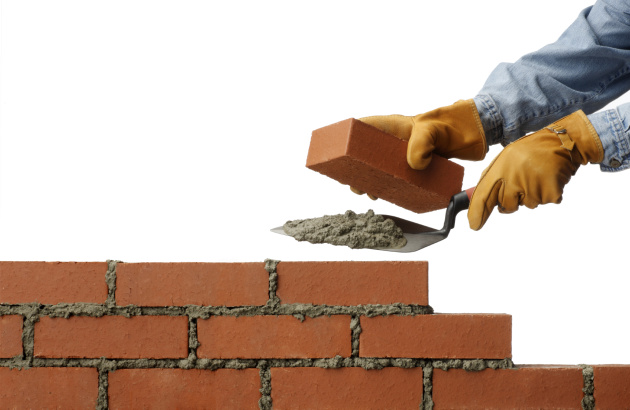
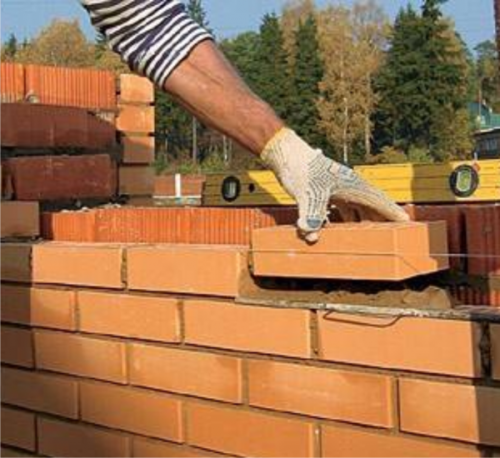
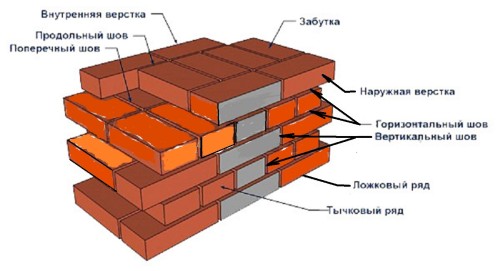
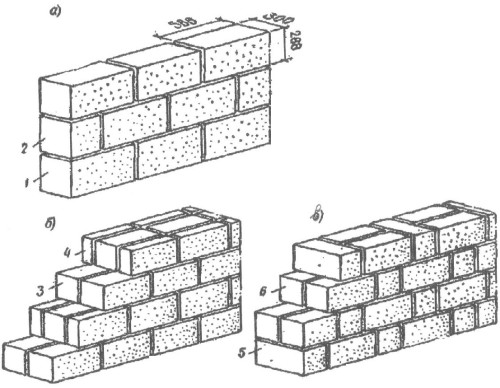
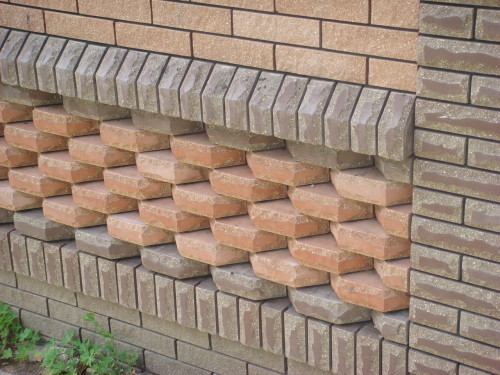
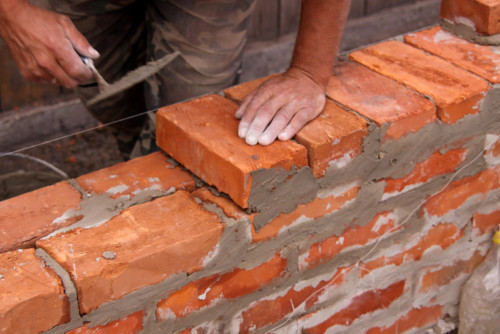

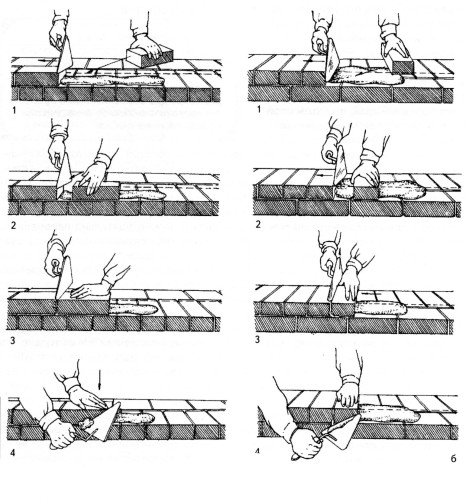
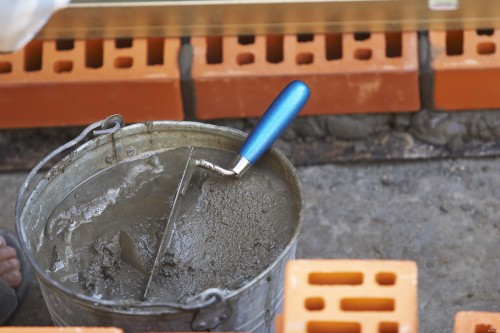
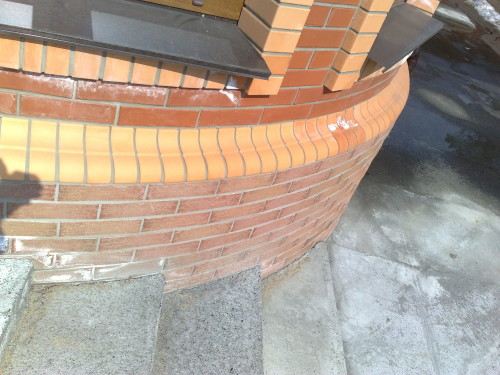












 Start a discussion ...
Start a discussion ...